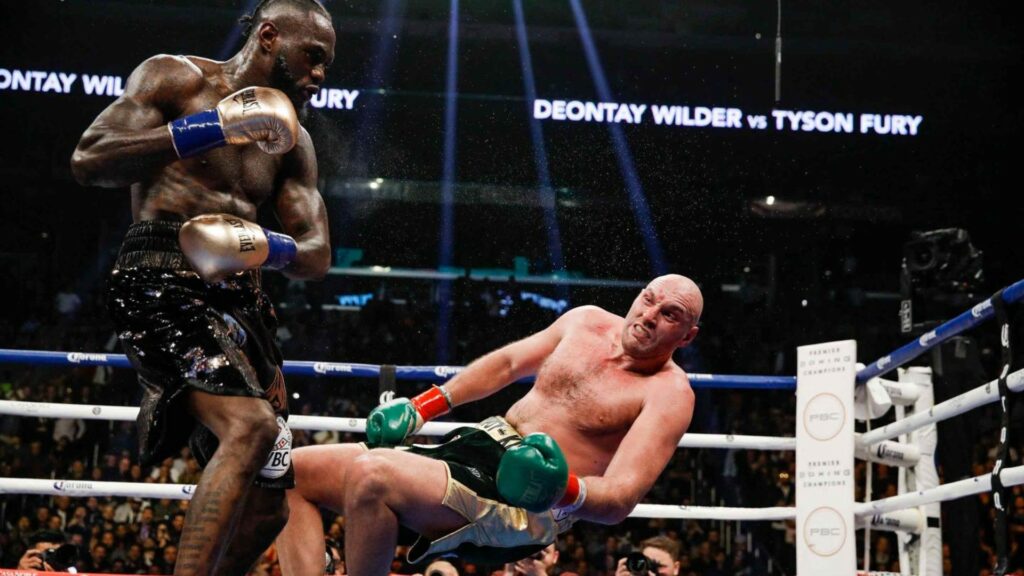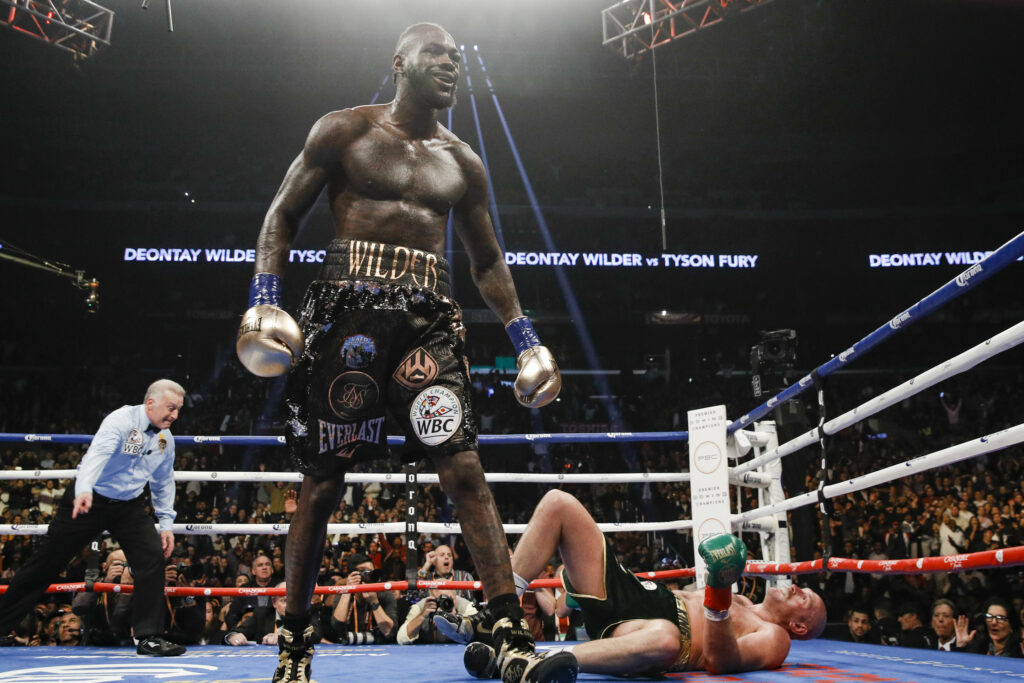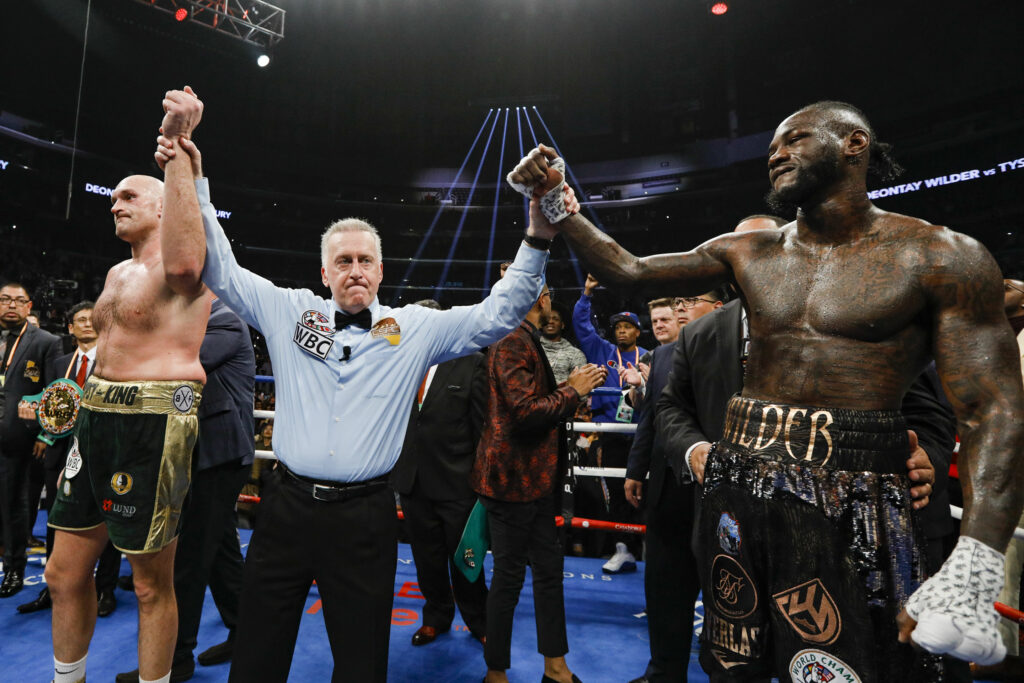Referee Jack Reiss speaks to Boxing Social about keeping busy during lockdown, his new refereeing course Sole Arbiter and the worldwide impact of being involved with that iconic knockdown during Fury vs Wilder I…
Brooklyn-born but West Coast-based for several decades, Jack Reiss has seen and done pretty much all you can do as the third man in the prize ring.
Renowned for his integrity and meticulous preparation, Reiss has – according to Boxrec – refereed or judged a staggering 1,069 bouts.
However, he admits that nothing could have possibly prepared him for the incredible surge of interest in his career after his brilliant handling of Tyson Fury’s iconic recovery from a heavy, final-round knockdown in that first drawn encounter with Deontay Wilder in December 2018.
“When I was in the moment and handling the knockdown I thought nothing of it,” the genial Reiss admits. “I was just doing my job the way I was taught. I didn’t think it was that big of a deal. It was just what I was supposed to do.
“But after the fight, by the time I’d got dressed and gone out for dinner with the guys and my wife, the texts and the emails just did not stop. As the days went by, it grew and grew.
“People were doing the funniest things online – putting Tyson Fury’s face on The Undertaker’s face. All sorts of memes and videos. I have to admit I got a kick out of it.
“Then about two or three months before the second [Wilder vs Fury] fight, I started getting calls from all over the world and I did a lot more interviews. Everything blew up. People from all over the world reached out to me – from South Africa, Australia, the UK, all over. It’s been incredible.”

Being the centre of attention is an unusual feeling for Reiss, who is unswerving in his belief that a referee shouldn’t ‘over-insert’ themselves or ‘over officiate’. In other words, if you watch a fight and don’t notice the referee, then he’s probably had a good night.
If you think of the most famous examples of refereeing in boxing history, they usually relate to ineptitude (Jersey Joe Walcott during Ali-Liston II) or controversy (Richard Steele during Julio Cesar Chavez vs Meldrick Taylor I).
Reiss’ actions in giving Fury the chance to climb off the canvas, rather than waving the fight off, represent a rare example of a piece of refereeing that helped to create an iconic and unforgettable moment that is not – among the sane and the rational at least – clouded in controversy.
“I’ve got to be honest with you, it’s been wonderful,” Reiss admits. “It’s made me realise how fortunate I am to have had a moment like that placed upon me. If I’d made the wrong move the moment would have passed. But I’m a part of it now.
“God guided me in the right direction and I was part of that. It’s wonderful, I love it and I’m blessed to have it. And if I went now, if I was suddenly out of boxing or whatever, well, l’d still be blessed with that moment.”

the finest refereeing displays in boxing history. Photo: Esther Lin, Showtime.
The past few months, of course, have given Reiss a taste of what life is like without refereeing and judging – the last time he was involved in a bout was way back in mid-February.
He admits that he has missed the cut and thrust of live boxing. However, Reiss is also a thoughtful and philosophical character, and confesses he is grateful for the fresh insights and perspectives that the strictures of the Coronavirus crisis have inspired.
“This whole process has made me re-evaluate a lot of things. A lot of things,” he says. “Yes, I can’t wait to get back to boxing. I had major neck surgery last year and this lay off has kept me away longer than the operation. Last year, I was back judging after three months off and reffing in four months.
“But although I’ve missed boxing tremendously, I’ve got to be honest with you – I’m getting long in the tooth and I see the light at the end of the tunnel for me professionally.
“And you know what? When my time is up I’m gonna be okay. Since this Covid-19 thing, I’ve got a new appreciation for being home with my wife and taking better care of myself. I’ve also been able to see some friends who I’ve neglected.
“Boxing has been like a mistress for me, keeping me away from a lot of things and I now know I’m going to be okay with it when I walk away.”

Reiss has also spent significant time during lockdown on an exciting new training initiative he is building alongside his friend, the former referee and fellow judge Pat Russell.
Entitled ‘Sole Arbiter’, Reiss and Russell’s course is a dynamic and hands-on experience aimed at every level of possible referee, from novices to pros.
“Sole Arbiter came out of demand,” Reiss explains. “I’m one of two ABC-certified referees in the world. I train sanctioning bodies and commissions when they ask me to because my reputation – knock on wood – has been maintained.
“As I’ve acquired more experience, faced more challenges and come out of them okay, more and more people – including officials, often young officials, from all over the world, have come forward to ask me questions.
“Pat Russell and I are great friends and three years ago one of our commissioners here in California grabbed me by the neck – playfully, I might add! – and said [to Pat and I], ‘We need you to develop young officials. We’ve got nobody when you guys go!’
“So we put a training programme together. I was hired by the British Columbia Athletic Commission up in Vancouver to teach a course. I taught it in 2015, I taught it again last year and took Pat along as an assistant.
“He loved it and he said, ‘It’s time we did this thing properly, let’s do it’. Well, it’s taken us about 18 months to revamp and modernise the course and we’ve now decided to go out on the road with it.”
Reiss has been fine-tuning the Sole Arbiter curriculum during lockdown and the debut course will run from September 4-6 this autumn in Ventura and Oxnard, California.
“There’s nothing else like this programme,” Reiss says. “It is a 26-hour, three day intense course. The first two days are classroom-based, going over theory, videos, rules and regulations and the mechanics of how to officiate while you’re in the ring.
“On the third day, we go into the gym. Here in California, we’ll be using the Boxing Laboratory gym where [Sergey] Kovalev, [Vasiliy] Lomachenko and many others train.
“I hire boxers to come in and they have a script for different scenarios to use so I can check the referee’s movement, their ability to break up clinches and so on.
“At the end, you either get certification or an attendance certificate. When we ran it in Vancouver only two guys passed. It’s a challenging course but it’s for everyone. You could come along as a fan – and have a fantasy experience.
“If you’re an amateur ref that wants to step into the pros it’s perfect and, if you’re a pro, it’s going to help you up your game. And, if you’re a writer or broadcaster, it’s going to give you a greater understanding and appreciation of what goes on in the ring.
“So far we’ve had wonderful feedback. It’s exciting but also challenging, difficult and intense.”
Unsurprisingly, given his deep love of and respect for the sport of boxing, Reiss ultimately sees ‘Sole Arbiter’ as an opportunity to leave a positive legacy within the boxing.
“I want to educate the public,” he emphasises. “If I can make you understand something on a deeper level then you’re gonna educate others and make the sport better. So I’m trying to leave a good legacy. I can’t fix the sport but at least I can make a contribution.”
You can find out more about Sole Arbiter at https://www.solearbiter.com/